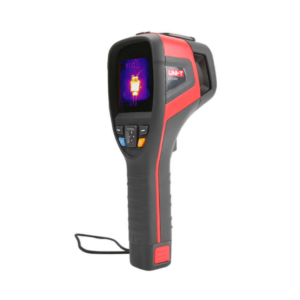Key Specifications of Thermal Imaging Cameras
Thermal imagers can assist you in your applications by enabling you to see more. Whether you are checking buildings, performing industrial maintenance, inspecting solar energy / photovoltaic systems or undertaking research.
Thermal Imaging (Infrared Thermography), is a non-contact technology that measures or sees infrared wavelength thats being emitted from objects. It then converts the temperature information into the image. The thermal image has a colour palette that shows a temperature range of the image being displayed. Potential failures or problems are indicated by hot sports or rise in temperatures. Every temperature point in the image is stored and fully radiometric in the thermal imagers.
So you can find anomalies before damage can occur, thermal imagers allow you to evaluate the heat status of low, medium and high voltage systems effectively.
Infrared wavelengths are part of the electromagnetic spectrum that we perceive as heat and are too long for the human eye to detect. Any object that has a temperature above absolute zero emits heat.
Three Critical Specifications
Three main specifications are critical in the process of selecting a thermal imager: temperature range, thermal sensitivity (NETD), and resolution.

Temperature Range
Temperature range is something important to consider when you’re selecting a thermal imager. For industrial applications, the temperature range is the main specification to consider. Industrial applications have high-temperature equipment such as boilers and steam systems, so a thermal imager with a wider temperature range is vital.
Thermal Sensitivity (NETD)
Thermal sensitive or Noise-Equivalent Temperature difference (NETD) is the measurement of the smallest temperature difference that a thermal imaging camera can detect in the presence of electronic circuit noise. Thermal imagers that have a low NETD can detect very small temperature differences and higher resolution images to increase accuracy. Thermal sensitivity is measured in milliKelvins (mK). Cameras with values at the low end of the scale of NETD are more sensitive. For example, cameras with 50 mK are about 4 times as sensitive as a camera with 200 mK. The more sensitive (50 mK) cameras provide a wider temperature difference, resulting in more colours on the thermal display.
Resolution
Thermal imaging cameras with detector resolution play pivoted role in the image quality. Higher resolutions provide precise and reliable measurements of smaller targets from further distances, creating sharper thermal images. The higher the detector resolution, the more accurate the camera. Quality of the thermal image and its data is always determined by the detector resolution are important when evaluation detector resolution and display resolution. For example, if the built-in screen has a resolution of 307,200 pixels (640 x 480) but the thermal detector resolution is only 19,200 pixels (160 x 120), the thermal image can only be measured by the resolution of the thermal detector.
See our full line of thermal imagers.
